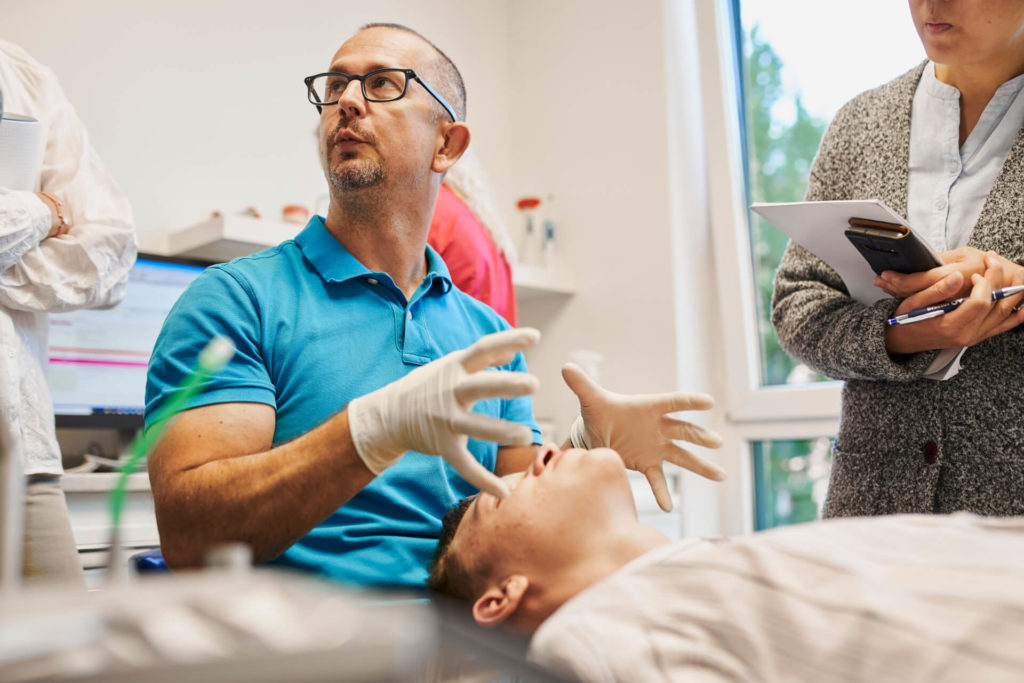Orthodontics is a vast field of dentistry that is strongly based on decision and treatment planning. The dental specialist makes the final diagnosis after evaluating the patient’s clinical condition and database. But on what basis the specialist made the final decision is still questionable. Rather they decided on specialists’ intuitions, clinical skills, or evidence in literature. It’s difficult to give the final verdict on which approach is superior to the other. Orthodontists frequently encounter uncertainty when determining the best treatment plan. They often face questions like: Should extractions be recommended? If so, which teeth should be removed? Is it better to intervene in this growing patient now or wait until later? What is the ideal time to begin treatment?
Evidence-based orthodontics
The current era is based on evidence-based dentistry. Evidence-based dentistry (EBD) can be defined as a method of delivering oral healthcare that involves carefully integrating systematic evaluations of scientifically relevant evidence about the patient’s oral and medical conditions and history. It also includes the dentist’s clinical expertise; patient’s treatment needs and preferences. The evidence-based practice has three levels of hierarchical system. Levels 2 and 3 are true evidence while level 1 includes the information and decisions that are based on the clinician’s experience. Medical and orthodontic literature is full of examples where inaccurate procedures can lead to errors in diagnosis. So, a systematic approach is required in orthodontic treatment planning. The research shows that cognitive errors are the most frequent errors that can occur due to knowledge gaps and not considering other treatment possibilities after reaching the initial diagnosis. LeanOrthodontics® by Dr Baxmann provide the evidence-based treatment planning approach by its new developed ABCD system®.
Heuristic learning processes
The other approach to decision-making in orthodontics is the heuristic process. It’s also called Analytical processing which is different from the other processes. The heuristic approach enables quick decisions and helps the brain to process the information quickly and rapidly. In the 1950s, Herbert Simon, a Nobel Prize-winning economist and cognitive psychologist first introduced the concept of heuristics in psychology. Sometimes the Diagnostic reasoning relies on unconscious heuristics which are the mental shortcuts that enable quick decision-making with limited information. These intuitive methods can be more influential than rational analysis, prompting swift actions when there isn’t time for detailed clinical evaluation.
This approach is also utilized by most orthodontists because they face a heavy workload, patient flow, limited time, and patient short-duration treatment demands. Under these circumnutates the heuristic can be a reasonable strategy for most orthodontists. Heuristics are useful for problem resolution but can lead to systematic errors in judgment especially in dealing with complex and uncertain cases.
Is the heuristics approach a rational one?
The heuristic approach enables clinicians to make fast and efficient decisions based on past experiences and pattern recognition. This can be very useful in busy clinical settings where time is one of the biggest limitations. Experienced orthodontists often make Instinctive decisions that help them quickly identify common issues and effective treatments. This practical knowledge is valuable, especially in non-complex cases. However, this approach still has some limitations such as Heuristics are based on previous experiences and can be influenced by cognitive biases. This can lead to errors in diagnosis and treatment if one case is different significantly from another one. Likewise, complex cases in orthodontics require details analysis based on the literature in such cases the heuristic might not be useful. These limitations can be balanced with comprehensive clinical evaluation and evidence-based practices.
How to Balance the shortcomings of Heuristics
The bias in the heuristic approach can be overcome by the evidence-based dentistry. It ensures that all clinical decisions are supported by the latest scientific research. This approach combines the speed and practicality of heuristics with the reliability of systematic evidence. Even when utilizing heuristics the orthodontists should do complete clinical assessments that take into account all relevant facts to gain a comprehensive picture of the patient’s situation.
Role of AI in Heuristic and evidence-based Orthodontics
The use of Artificial Intelligence also plays a supportive role along with heuristic and evidence-based decision-making. It provides the database with the current and previous treatment plan and their success rates. AI systems can analyze vast amounts of data and identify patterns that may not be immediately apparent to human practitioners. This helps in developing intuitive shortcuts or heuristics based on a broader range of cases and outcomes.
AI can generate new information from a large data set of various research, clinical trials, and case records to provide a comprehensive evidence base for decision-making. AI systems can keep up with the latest research and guidelines which ensures that orthodontists have access to the most current and relevant evidence in decision making and treatment planning.
Citation:
- Hicks EP, Kluemper GT. Heuristic reasoning and cognitive biases: Are they hindrances to judgments and decision-making in orthodontics? Am J Orthod Dentofacial Orthop. 2011 Mar;139(3):297-304. doi: 10.1016/j.ajodo.2010.05.018. PMID: 21392683.
- Baxmann, M., & Gronau , K. (2024). Dr. Baxmann´s LEAN ORTHODONTICS® – The Ultimate Practice Book Series for excellent Orthodontics: Case Planning Volume 3. https://www.amazon.sg/Dr-Baxmann%C2%B4s-LEAN-ORTHODONTICS%C2%AE-Orthodontics/dp/3948361673

